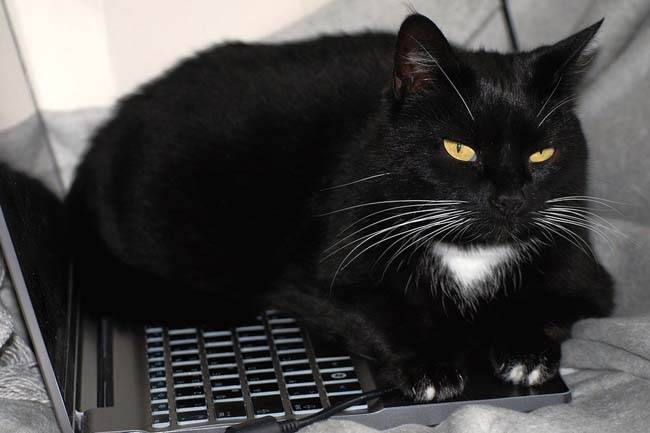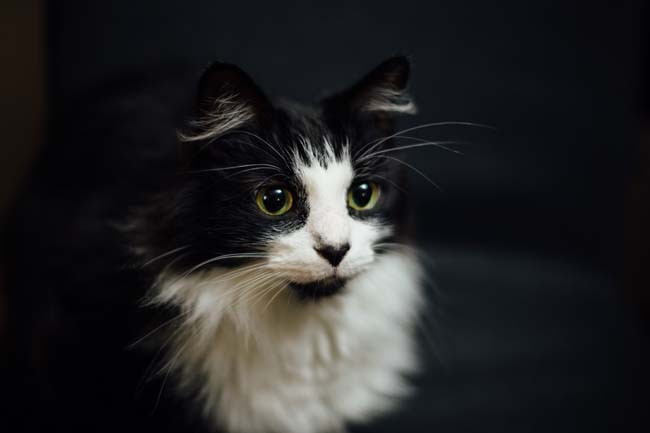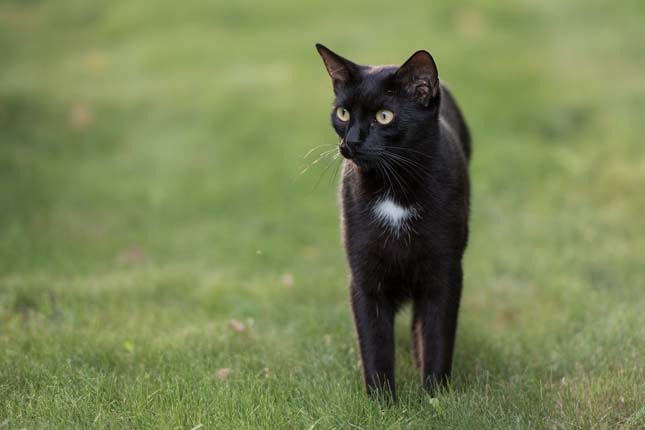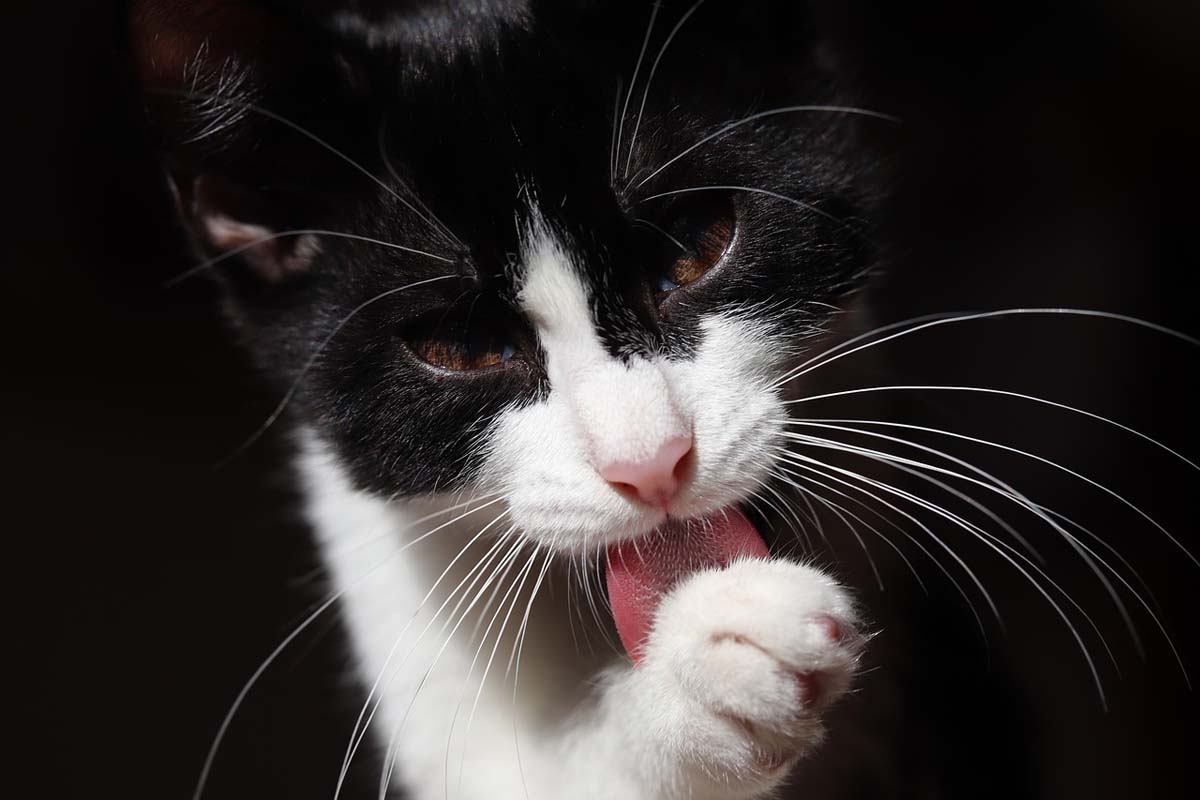What is white spotting?
White spotting (WS) is the appearance of areas of white on a solid or tabby cat and occurs in both purebred and random-bred cats. The gene responsible is dominant, which means the cat only needs to inherit one copy for white spotting to occur.
The white spotting pattern is due to the insertion of feline endogenous retrovirus in the KIT gene. Anecdotal evidence suggests that are homozygous (ie: have two copies of the WS gene) will display more white than heterozygous cats. A full 7125bp insertion results in white spotting while a partial insertion causes dominant white.
Feline endogenous retroviruses are ancient viruses that have integrated into host germline cells (egg and sperm) and make up to 6-10% of the cat’s genome. Several types of endogenous retroviruses are present in domestic cats, however, there is no evidence they are infectious.
White spotting and white masking are both located on the KIT gene, the order of dominance is as follows:
- W: Dominant white, the cat is entirely white, with blue eyes, and is often deaf
- WS: White spotting, the cat has a tabby or solid colour with areas of white
- w: Non-white
- wg: White gloving, the cat has white on the feet
Dominant genes are symbolised with UPPERCASE letters, and recessive genes lowercase.
Migration of melanocytes
Melanocytes (responsible for the pigment in skin and hair) are derived from the neural crest (the back of the embryo) and migrate along the dorsolateral pathway to the epidermis and epidermal hair follicles. The white spotting gene prevents the melanocytes from proliferating fast enough. In essence, dark coloured pigment cells are unable to spread as far as they do on other, non-piebald, creatures, in time to pigment the hair and skin, leaving areas of non-pigmented fur, typically the legs and underside of the cat.
Piebald grades
Also known as bicolour, a piebald is a cat with white fur combined with another colour (tabby, solid, calico etc). The amount of white varies from cat to cat. All genes come in pairs, one inherited from the mother, and one from the father. Anecdotal evidence suggests that cats who inherit two copies of the white spotting gene will have more white than cats with one copy.
Grades 1-4 (low grade)

Less than 40% white. Cats with low-grade white spotting can range from almost entirely solid coloured to 40% white. Names are commonly used to describe the location such as mitted (paws), locked (chest) and tuxedo (black and white only)
Grade 5 (medium grade) – 40-60% white.

Grade 6-10 (high grade) – Over 60% white, but some cats can be almost entirely white with just a small smudge of colour. Some descriptions include van (colouration on and between the ears and tail), magpie or cow (random spotting on the body) and Harlequin (random spotting on the body and a coloured tail).

Names for coats with white spotting
Probably the most well-known of the white-spotted coats is the tuxedo, which as the name suggests, is a combination of black and white. But there are several additional white spotting colour combinations.
Bi-colour or piebald is generally a catchall term used to describe a cat with a tabby pattern or solid and white. It typically doesn’t describe the grade of white.
Locket: A mostly solid cat with a small amount of white ranging from a few hairs to a patch of white on the chest

Tuxedo: Black and white

Harlequin: Predominantly white with splashes of another colour

White mitted: White feet

Calico: Patches of black and orange, or cream and grey and white

Caliby: Patches of orange and brown tabby, or cream and grey and white

Van: White with colour on the head and tail

Breeds of cat with the white spotting gene
White spotting is widespread in both purebred and random-bred cats. Piebald (white spotting) is accepted in the following cat breeds:
- American Curl
- American Shorthair
- Bambino
- Birman
- British Longhair
- British Shorthair
- Cornish Rex
- Cymric
- Devon Rex
- European Shorthair
- Exotic Shorthair
- Japanese Bobtail
- LaPerm
- Maine Coon
- Manx
- Minskin
- Munchkin
- Napoleon
- Norwegian Forest Cat
- Oriental Longhair
- Oriental Shorthair
- Peterbald
- RagaMuffin
- Scottish Fold
- Scottish Straight
- Selkirk Rex
- Siberian
- Snowshoe
- Sphynx
- Turkish Angora
- Turkish Van
Feature image: birgl/Pixabay

